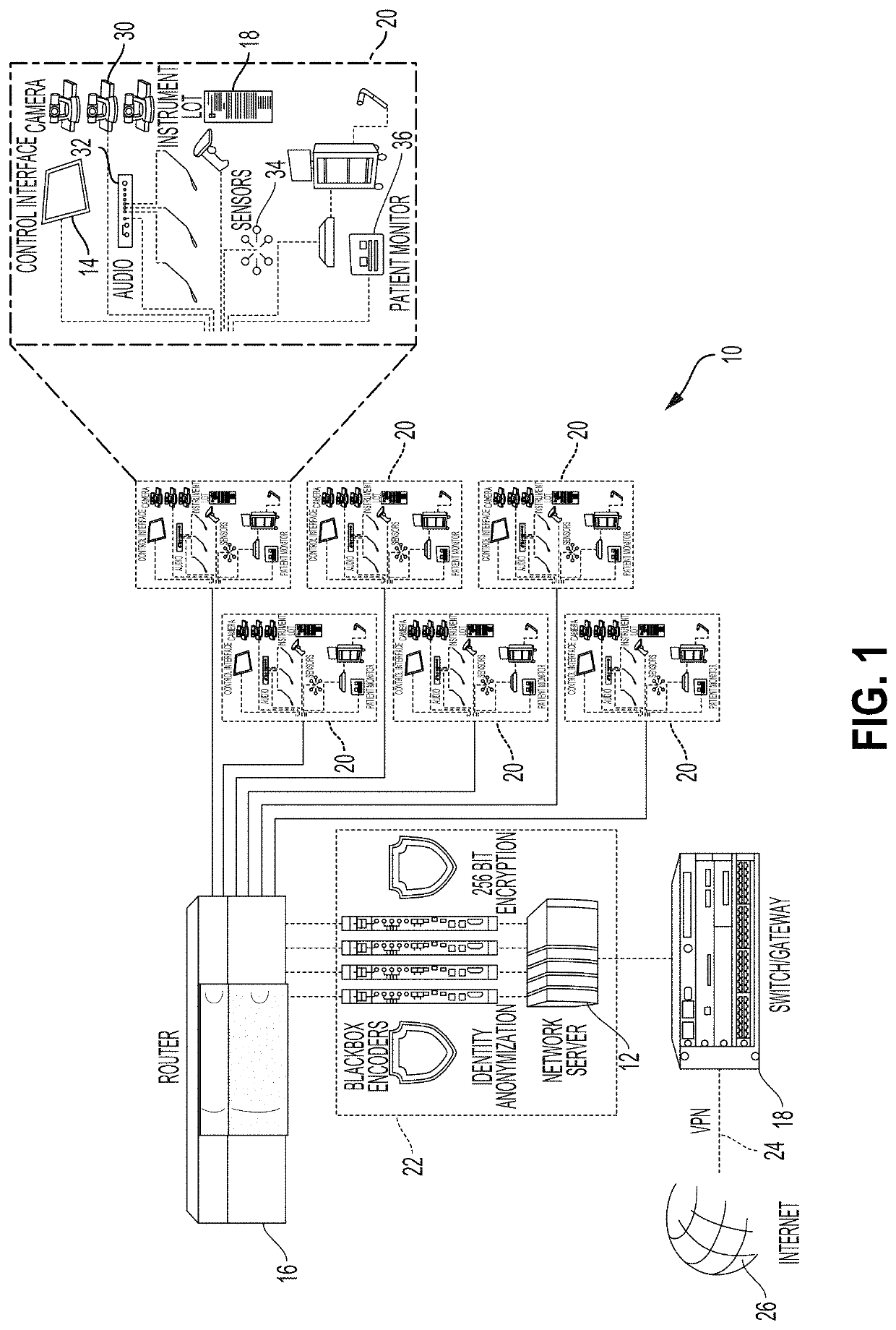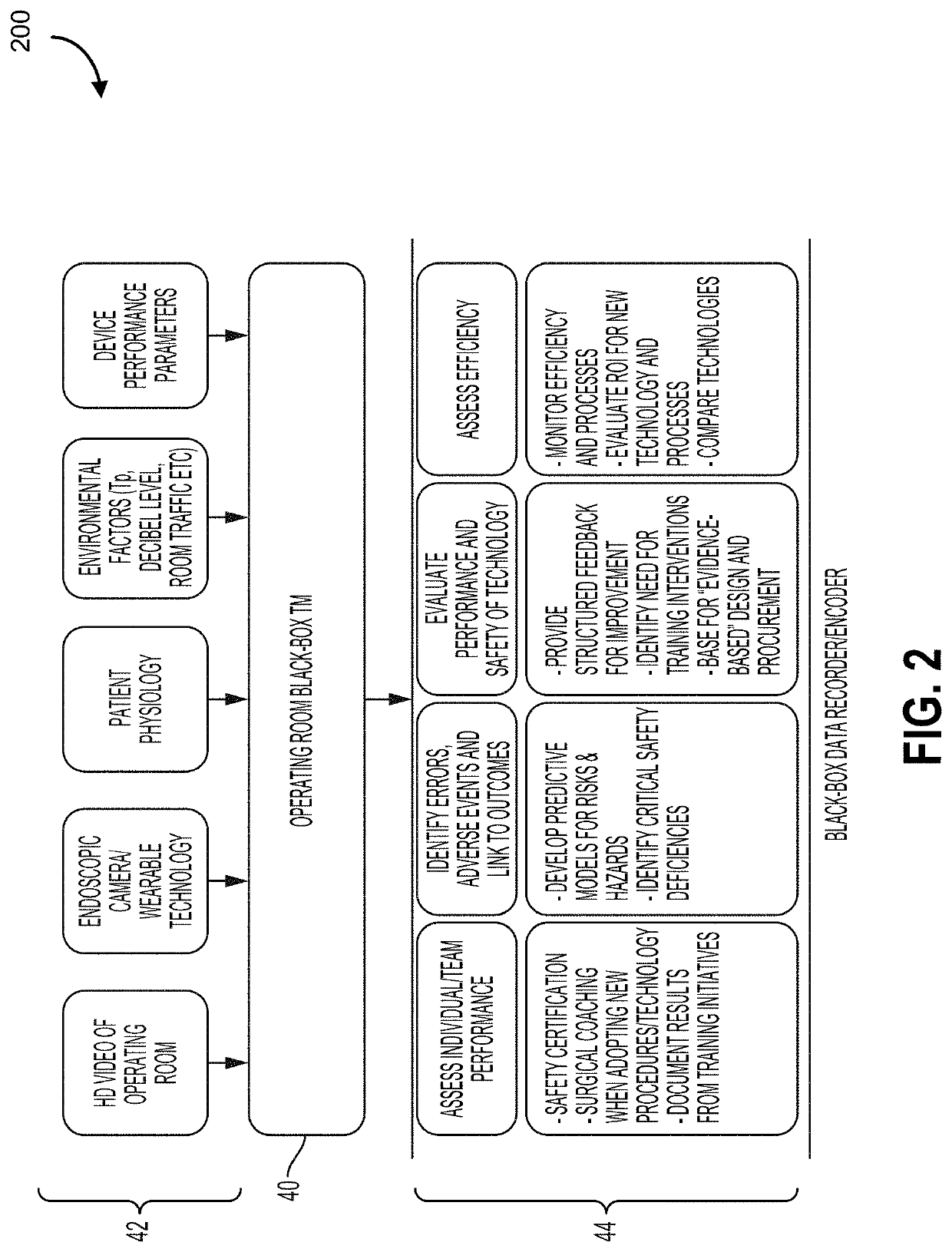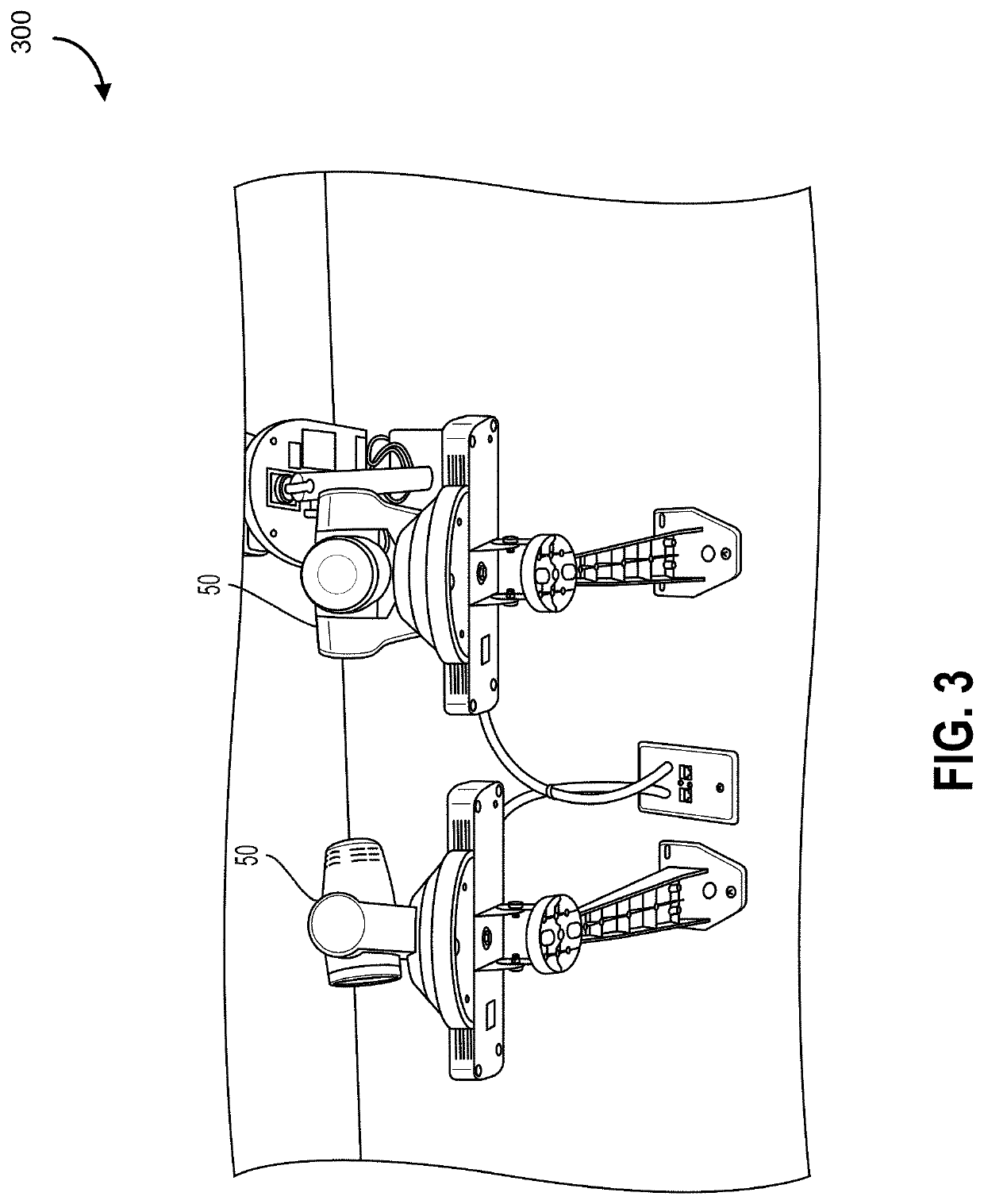System and method for biometric data capture for event prediction
- Summary
- Abstract
- Description
- Claims
- Application Information
AI Technical Summary
Benefits of technology
Problems solved by technology
Method used
Image
Examples
first embodiment
[0192]In a first embodiment, alerts are controlled to be actuated during the entire duration of the flagged abnormality (e.g., an alert light may be turned on, a flashing signal may be controlled, a graphical display may occur, a tactile alert such as a vibration could occur). However, this naïve approach may yield a large number of false positive events, causing alert fatigue in practitioners. False positives can occur, for example, in particularly stressful procedures (e.g., a less often conducted surgical procedure or a procedure with a high complication rate) as practitioners may naturally have HRV values that indicate stress levels that pass a threshold for a baseline and there may be many durations of abnormality relative to a low stress procedure, such as a routine gallbladder removal. On the other hand, a high measured proxy for stress for gallbladder removal may be more concerning.
second embodiment
[0193]In a second embodiment, alerts are controlled to be actuated only when the perception engine generates an output predictive of an increased probability of an adverse event occurring greater than a particular threshold. In this embodiment, the perception engine receives increased input features for conducting an analysis (and the flag and / or the underlying biometric data itself may be an input), the perception engine's capability for generating accurate predictions is increased but automatic tuning can occur through training the perception engine over a number of epochs of training cases, or continuous training.
[0194]The alerts can be controlled in this situation to be more closely aligned with the predicted probability of adverse event, reducing potential false positives, for example, associated with a less often conducted surgical procedure, as an abnormal biometric reading is not always predictive of an adverse event occurring. In some embodiments, the perception engine is c...
PUM
 Login to View More
Login to View More Abstract
Description
Claims
Application Information
 Login to View More
Login to View More - R&D
- Intellectual Property
- Life Sciences
- Materials
- Tech Scout
- Unparalleled Data Quality
- Higher Quality Content
- 60% Fewer Hallucinations
Browse by: Latest US Patents, China's latest patents, Technical Efficacy Thesaurus, Application Domain, Technology Topic, Popular Technical Reports.
© 2025 PatSnap. All rights reserved.Legal|Privacy policy|Modern Slavery Act Transparency Statement|Sitemap|About US| Contact US: help@patsnap.com



